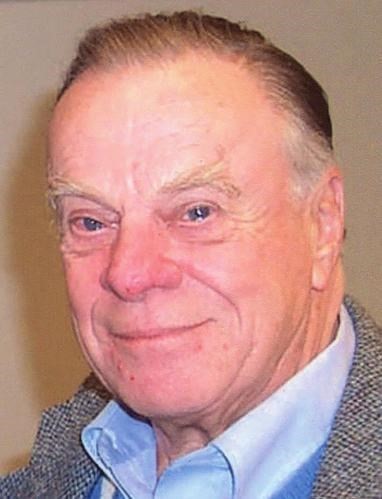 Lawrence W. Jones, an experimental particle physicist who contributed to important developments in accelerators and detectors, and a well-respected mentor and educator, passed away on 30 June 2023.
Lawrence W. Jones, an experimental particle physicist who contributed to important developments in accelerators and detectors, and a well-respected mentor and educator, passed away on 30 June 2023.
Jones was born in Evanston, Illinois, USA, on 16 November 1925. He enrolled at Northwestern University in autumn 1943, but was drafted into the US army a few months later. He served in Europe during World War II in 1944 and 1945, then returned to Northwestern to complete a BSc in zoology and physics in 1948 and an MSc in 1949.
After completing a PhD from the University of California, Berkeley in 1952, Jones came to the University of Michigan to begin a lifetime career in the physics faculty. In 1962, he acted as dissertation adviser to future Nobel laureate Samuel C. C. Ting and he was promoted to full professor in 1963. He served as the physics department chair from 1982 to 1987 and was named professor emeritus in 1998.
Jones collaborated in the 1950s in the Midwestern Universities Research Association (MURA), a collaboration of US universities that developed key concepts for colliding beams, and built the first fixed-focus alternating gradient accelerator.
Over the course of his career, Jones contributed to the development of scintillation counters, optical spark chambers and hadron calorimeters. He participated in experiments designed to measure inelastic and elastic scattering, particle production, dimuon events, neutrino physics and charm production.
Jones came to CERN as a Ford Foundation Fellow (1961–1962) and as a Guggenheim Fellow (1964–1965), then contributed to cosmic ray experiments on Mount Evans, Colorado, and nearby Echo Lake.
In 1983, Jones joined the L3 experiment at CERN, which was led by his former student, Samuel Ting. The Michigan team, led by Professor Byron Roe, helped to design, construct and install the experiment’s hadron calorimeter, a key component used to determine the number of elementary neutrino families. Jones also contributed to the construction of L3 Cosmics, a programme to trigger on and measure cosmic rays, using L3’s precision muon detector and surrounding solenoidal magnet.
His interest in entomology led to a species of beetle (Cryptorhinula jonsi) being named after him. On the first Earth Day, in 1970, Jones introduced the term “liquid hydrogen fuel economy” and, in 1976, he joined the advisory board of the International Association for Hydrogen Energy.
Jones’s wife Ruth died in 2018, but he is survived by his children, Douglas W. Jones (and Beverly), Carol Jones Dwyer (and Robert) and Ellen Jones Dillman, as well as grandchildren Nathaniel (and Robin) and Rachel Jones, Maeve Dwyer, Kevin and Peter (and Brittany) Dillman, and four great-grandchildren.
Steven Goldfarb and Byron Roe
